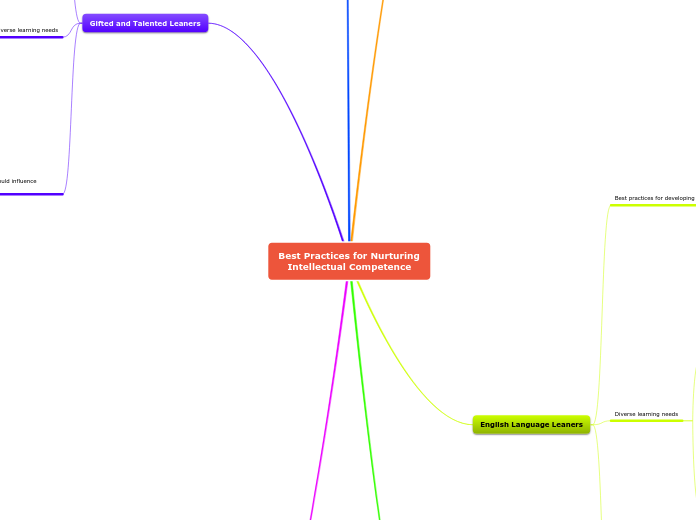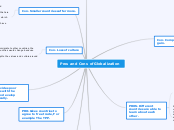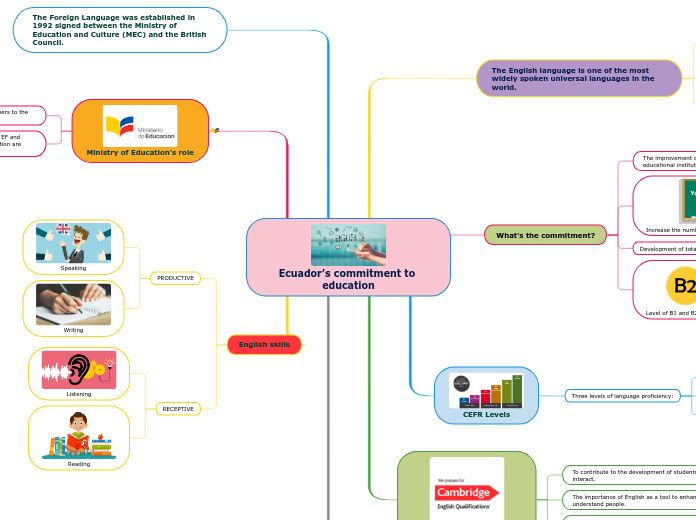Best Practices for Nurturing Intellectual Competence
Children from Poverty
A lot of things that students go through outside of school can interfere with their ability to focus, retain the material that is being taught, cope with various things, as well as many other things.
Factors beyond the students’ control can hinder their academic growth, such as lack of parent involvement, family income, attendance
Combining these intelligences make the learning experience even better for the students (Armstrong, 1994)
Be creative with the activities that are created (Armstrong, 1994)
Know the student at hand and plan your lesson accordingly (Armstrong, 1994)
Partner work with someone who may be able to help the student be more successful with certain tasks, due to the extra assistance
Modified work required to be done outside of school, due to the possibility of lack of resources so the students can still be able to do their work
Kinesthetics
Allowing students to move when needed
Adding movement to the lesson
Physical, emotional, social and cognitive
Gifted and Talented Leaners
Many gifted and talented programs also cause educational segregation by excluding students who come from diverse social and economical statuses.
Gifted students sometimes experience difficulties in the educational setting in regard to teacher attitude, friendships, being labeled, and getting bored easily. Higher expectations of gifted students can also cause anxiety in them feeling that they must achieve perfection and always meet expectations (Yaman, 2020).
Creating a curriculum for gifted and talented learners should meet the requirements of:
3) systematic and intentional alignment with the core curriculum (Chandler, 2015).
2) the existence of a scope and sequence to frame the knowledge and resulting instructional design
1) agreement regarding what gifted students should learn beyond the core curriculum
Plan lessons with diverse learners in mind with the ability to differentiate the lesson depending on the type of learner.
The NAGC Standards were developed based on the literature/theory-based, practice-based, and research-based needs of gifted students. (Chen. 2020)
The United States adopted the National Association of Gifted Children Pre-K-Grade 12 Programming Standards. (Chen. 2020)
School districts are diversifying their gifted programs by adopting research-based strategies for scouting gifted and talented students. These strategies include:
Widening the circle of adults scouting for student talent. (Yaffe. 2019)
Relying on local norms, rather than national ones, to determine who qualifies.
Choosing tests that don’t favor middle-class English speakers
Screening all students, not just those recommended by teachers or parents
References
Yaman, D. Y., & Sökmez, A. B. (2020). A case study on social-emotional problems in gifted children. Ilkogretim Online, 19(3), 1768–1780. https://doi.org/10.17051/ilkonline.2020.735156
Yaffe, D. (2019). REACHING full POTENTIAL: District leaders employ innovative methods to diversify gifted and talented programs. District Administration, 55(3), 38.
Wiles, J. W. & Bondi, J. C. (2015). Curriculum development: A guide to practice (9th ed.). Pearson.
Silalahi, R. (2019). Understanding Vygotsky’s zone of proximal development for learning. Polyglot: Jurnal Ilmiah, 15(2), 169–186. https://doi.org/10.19166/pji.v15i2.1544
Herndon, E. (2018). What are multiple intelligence and how do they affect learning. https://www.cornerstone.edu/blogs/lifelong-learning-matters/post/what-are-multiple-intelligences-and-how-do-they-affect-learning
Chen, W.-R., & Chen, M.-F. (2020). Practice and evaluation of enrichment programs for the gifted and talented learners. Gifted Education International, 36(2), 108–129.
Chandler, K. L. (2015). Recommendations for practice: designing curriculum for gifted students. Turkish Journal of Giftedness & Education, 5(2), 157–166.
Arias, E. A. (2016). Action research on the impact of student grouping. Elsevier, 232, 555-560. https://www.sciencedirect.com/science/article/pii/S187704281631309X?via%3Dihub
Armstrong, T. (1994). Multiple intelligences: seven ways to approach curriculum. Strategies for Success, 52(3), 26-28. http://www.ascd.org/publications/educational-leadership/nov94/vol52/num03/Multiple-Intelligences@-Seven-Ways-to-Approach-Curriculum.aspx
By Group 1:
Lauren Powell
LaKeisha Giles
Kaitlin Thatcher
Christene Vick
English Language Leaners
Consider cultural differences and adjustment problems
Consider low income issues
Group the students with classmates of similar socioeconomic and sociological factors to create bonds based on similar backgrounds, while making sure to change groupings as well to give more exposure and challenges (Arias, 2016).
Associating an ELL student with having a disability will limit the expectations for them and could decrease their opportunities
Allow time to free write in English so there is no correct or incorrect answers
Go outside and give them in the moment learning with word associations in English
During free time allow student time to watch school appropriate videos, and songs, in English and their language to compare
Incorporate movement activities so all students are listening and following along so the ELL student can associate the words with the movements (Herndon, 2018).
Provide cc when available to increase understanding
Give added time to complete work
Make books adapted to have English/other language
Provide recordings of readings for those who may struggle to read the material during silent reading
Have difficult terms defined
Provide dictionary, thesaurus
Provide visuals paired with English and other language terms for needed classroom objects and schedule. Give these to the entire classroom so everyone can be exposed and no one is singled out
Increase group projects in the classroom for more peer to peer interactions
Foster creativeness and get the students moving
Allow students time to speak in small groups so the students are able to hear the language in a more relaxed social setting
Create a safe learning environment
Exceptional Learners
Social and developmental theories that would influence curricular decisions
Scaffolding Theory
States that children gain experiences through problem solving on their own, peers and adults will gradually decrease the amount of prompting and direction that they provide (Silalahi, 2019)
Zone of Proximal Development
Describes the difference of what children can do alone and what they can do with assistance (Silalahi, 2019)
Information Process Theory
Describes how students retain, organize, and use information while learning and how these abilities change over time
Diverse learning needs
Incorporating multiple intelligences into curriculum planning
Including all types of learning styles in one lesson allows all students to be engaged and stay on task. “Instruction is characterized by abstraction, complexity, variety, and flexibility. In the classroom, one may see multilevel texts, learning contracts, group investigation, Internet use, and interest centers” (Wiles & Bondi, 2015, p.112).
Tactile Learners – Task cards, learning circles, sand tray for writing, board games, interactive whiteboards
Visual Learners – Charts, graphics, videos, draw/sketch ideas, thinking maps, visual displays
Kinesthetic Learners – Act out a scene, projects, role play, experiments, dance, field trips, information walls, create art
Auditory Learners – Play games, audiobooks, literature circles, oral presentations
Strategies for differentiating curriculum
Incorporate hands-on activities with math manipulatives, science experiments, and language arts projects.
Play audio recordings of stories while students read along to assist both auditory and visual learners.
Linking prior knowledge to newly presented knowledge
Leveled reading materials – Allows exceptional learners to learn about the same topic as the rest of the class at a different reading level.
Best practices for developing the whole child
Mental/Emotional check-ins to make sure the student is not overwhelmed
Constant Motivation
Create a positive, safe learning environment
Differentiated Instruction
Helps with “acquiring new knowledge, consolidating what is already known, gaining deep or conceptual understandings, and seeing connectivity in information” (Wiles & Bondi, 2015, p. 108).
Reward Positive Behaviors









